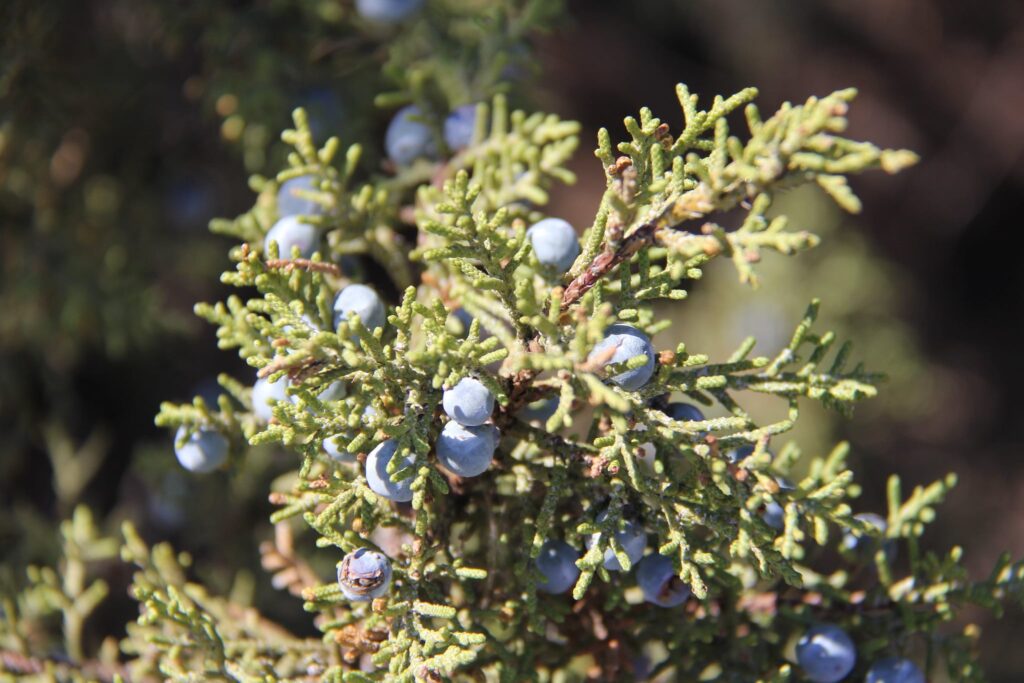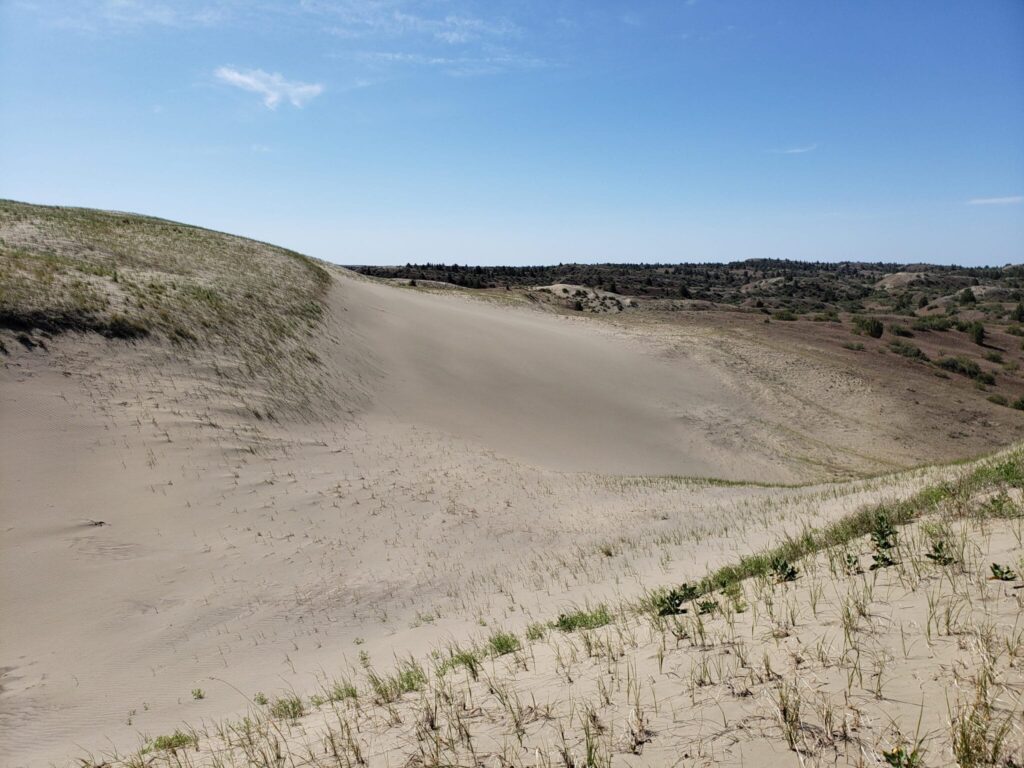After arriving at the trailhead for the Juniper Dunes Wilderness Area, I stepped down from the running board of my pickup, the dust settled, and as I surveyed the barren, desolate landscape that surrounded me, somewhere just over a nearby hillside, I heard an ocarina faintly whistling the tune from The Good, the Bad and the Ugly.
Or, maybe that was just in my subconscious.
Nonetheless, with the corrals, cattle chutes and gated pasture ground of Juniper Dunes Ranch at the north entrance of the wilderness area, I felt like my trusty Texas Heeler, Maizy, and myself were taking a step back in time to an old-time western flick. I half expected to turn around and come face to face with Clint Eastwood himself, chewing on a cigarillo. At which point I would have kindly asked him for an autograph.

Juniper Dunes Wilderness
Juniper Dunes Wilderness Area, located east of U.S. Route 395 between Pasco and Connell (almost directly east of the small unincorporated community of Eltopia), is a surprisingly unique wilderness area, and one that exemplifies the remote and unforgiving nature of the arid Columbia Basin shrub steppe.
The wilderness area is made up of 7,140 acres of sand dunes, shrub steppe, and as the name might suggest, an expansive network of wild western juniper groves. You know those piney-looking shrubs at your Grandma’s house that smell like cat pee and have the little hard blue berries? Those are the ones!
Luckily, these wild junipers don’t smell like cat urine, because out there, there aren’t neighborhood cats choosing these junipers as a litter box (seriously, that’s why they smell like that in town, not because of any aroma given off from the plant). They actually smelled quite good in the open, fresh air, kind of a sappy, pine smell. Some even say it reminds them of the smell of gin.
Exploring the Juniper Dunes
The wilderness area is open year-round, but the easiest point of access in terms of road conditions is the one in conjunction with Juniper Dunes Ranch, which is the way I chose this time. As told on the sign where you cross the private ranch property to reach the wilderness area, this way is only accessible from March through May, the rest of the year hikers must use the alternative route. If you go the alternate route, be sure to have a high-clearance, four-wheel-drive vehicle.

Once you reach the wilderness area there are a plethora of different trails to choose from, none of which are marked. If you know that you have issues with sense of direction, I would suggest finding a hill to climb on top of where you can still see your vehicle, and as long as it’s a clear day, locate Rattlesnake Mountain as a landmark to the west, so that if you do get turned around, all you have to do is find Rattlesnake to reorient yourself and get headed in the right direction back to your car.

As I trekked along, traversing the hills and dunes with Maizy, the junipers slowly began to thicken and grow in numbers. At the top of each hill the juniper groves stretched out to the south, looking off toward Jumpoff Joe Butte far in the distance south of Kennewick.
Juniper Dunes Wildlife
While the area certainly feels desolate and not all that kind to a plethora of fauna, the area is in fact home to a wide range of mammals, birds, snakes, and insect life. On the drive in I saw a handful of mule deer and a couple coyotes, and once on the trail every so often I would see some species of hawk (the exact type I couldn’t make out) circling above. Luckily, I didn’t come across any rattlesnakes, but be aware, they are a staple of the area as well. According to the U.S. Bureau of Land Management (BLM), Juniper Dunes is also home to kangaroo rats. Unfortunately, I didn’t encounter any of these elusive creatures.

At one point as I made my way down an embankment to a relatively flat part of the trail, surrounded by shrub steppe, the dried-out grass around me seemed to suddenly come to life. It was as if my presence along the trail created a wake, like a boat on the Columbia River. I would later determine that it was Mormon crickets that were apparently quite disturbed by my presence.
For those of you not familiar with the Mormon cricket, they are an unsettling sight once you’re able to get your eye on one of the shifty insects, as they’re relatively large, and look like something of a cross between a cricket and a cockroach. Black and shiny, they seemingly have little to no control of where they hop, flying in all directions, and as I walked along the trail they hopped in front of me, behind me, and occasionally bounced off my legs or torso.
Luckily, they seemed to be relatively isolated to certain areas, because after about twenty or thirty feet of walking through their dizzying circus of leaping, they dissipated, and it was once again just Maizy and I alone on the trail.

A Unique Slice of Wilderness
While the absence of trail markers and relatively unmanaged nature of the landscape did make the trail a bit treacherous at times, it also gave the hiker the feeling that this was truly remote, relatively undisturbed by people, and a unique slice of wilderness, unlike any other place the northwest has to offer. According to the United States BLM, it is the northernmost western juniper grove in the country.


If you’re prone to agoraphobia, Juniper Dunes may not be the place for you. On a clear day, like the April day I was there, if you climb to the top of one of the dunes, the 360-degree views truly exemplify the wide open spaces that represent the American West. Dunes, shrub steppe, and dryland wheat fields stretch to the horizon. To the east and southeast you’ll see the Blue Mountains of southeast Washington and northeast Oregon (which were shimmering and snow-capped still the day I was there), Jumpoff Joe Butte to the south, Badger, Candy, and Red mountains to the southwest, Rattlesnake Mountain due west, and a hint of the Columbia River’s White Bluffs to the northwest.
Juniper Dunes Wilderness Area is a great place for the early spring, late fall and winter hikers. Plenty of folks brave it in the summer as well, but with temperatures that soar well into triple digits, the dry, dusty landscape can be quite unforgiving. Regardless of the season, be sure to pack plenty of water in with you, and snacks for good measure. Cell phone reception was intermittent, but at the top of most of the hills I could usually get a bar or two of service.

While I’d be the first to admit that the green, evergreen-laden trails in other parts of the state are oftentimes more inviting than the desert of southeastern Washington, Juniper Dunes Wilderness area is a truly unique and rare landscape that every northwesterner should check out at least once or twice. Just remember, if you hear the melody of the ocarina whistling over a hilltop, keep your eyes peeled for Lee Van Cleef — he may just be hot on your trail.
Photos: Bureau of Land Management Oregon and Washington and Brent Atkinson.



[…] in Pasco, Washington, the Juniper Dunes Wilderness area is something quite unique to the area. Not only is it Washington’s largest juniper grove but […]